The foci of NIKA1mm and NIKA2mm show consistently a significant difference of ~0.3mm (assuming of course, the NIKA foci performed this way are reliable !).
Three examples are shown below: two obtained at best weather conditions on June 3rd and one on June 4th at considerable worse conditions.
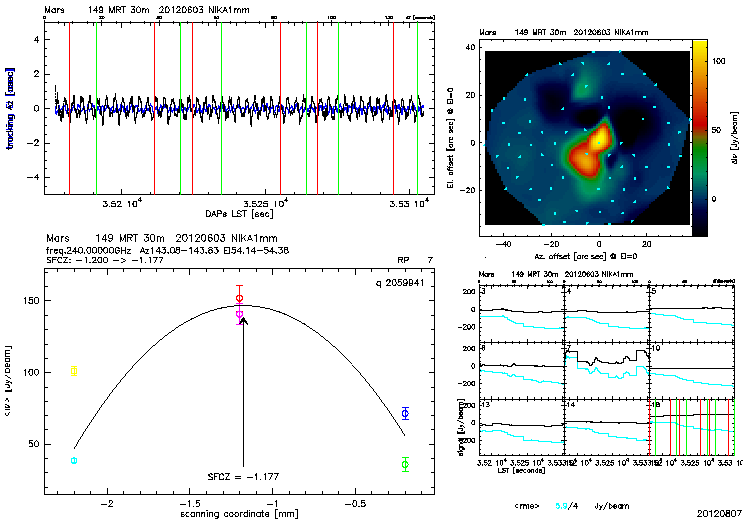

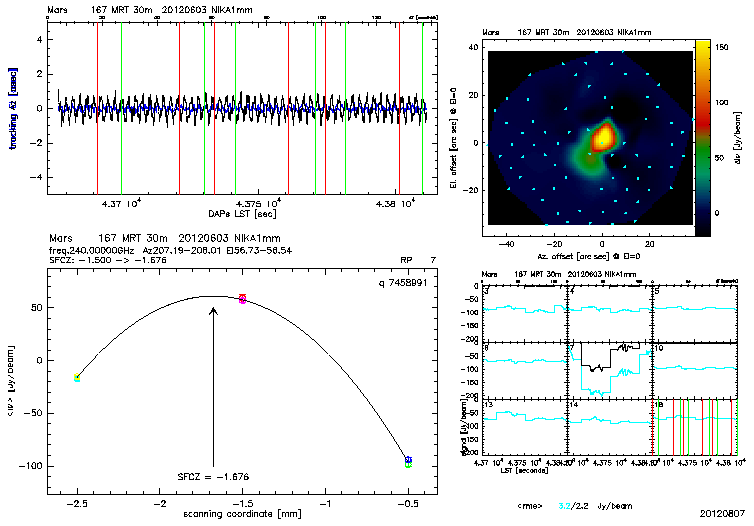
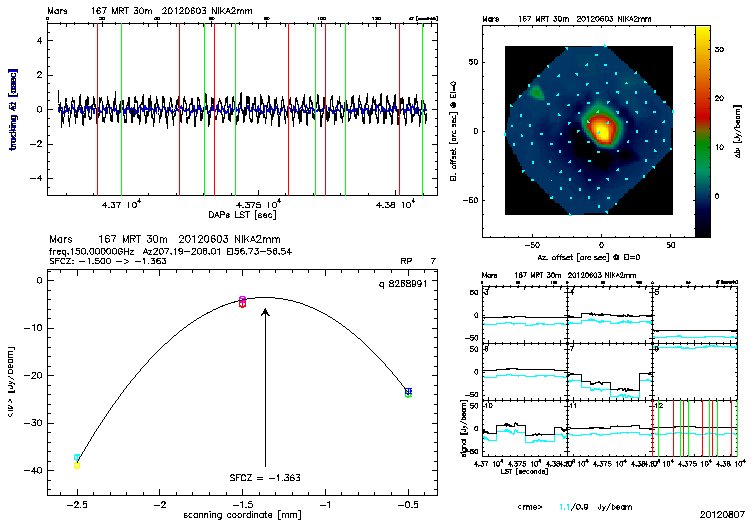
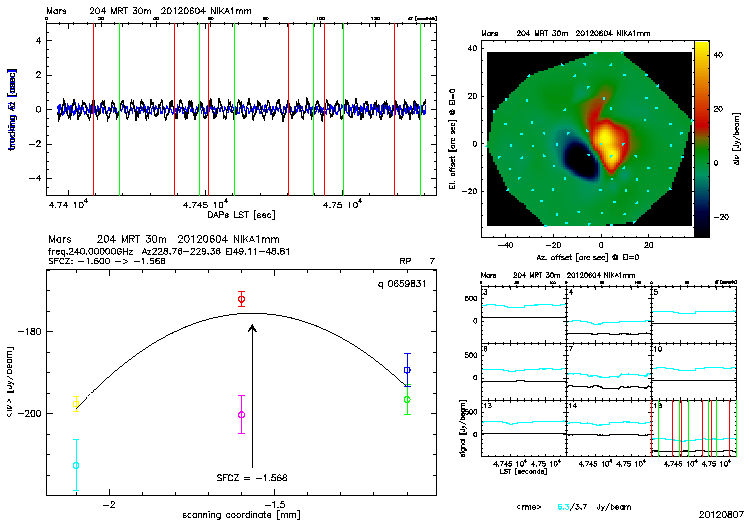
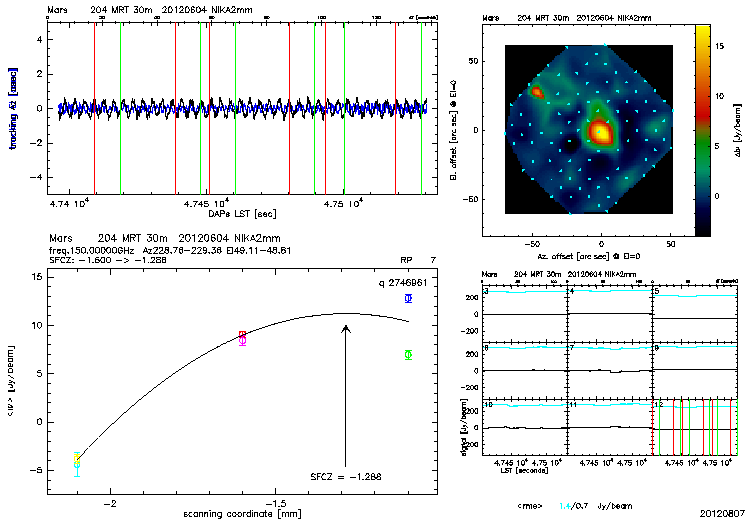
The panels per focus scan show: top-left: the telescope tracking (coordinate errors) in azimuth (black) and elevation (blue); top-right: max-min per scan over the FoV; bottom-right: signals of selected pixels, in cyan the original data, in black after subtraction of the correlated signal (i.e. mostly the sky emission and noise), the corresponding rms values are shown below; bottom-left: the focus fit, "SFCZ=" gives the fitted value, the quality of the data is demonstrated by the error bars and the agreement of the signal in the two measurements at the same focus value (= scanning coordinate).
As the 1mm and 2mm arrays are not perfectly aligned, a focus difference should be in principle expected due to beam broadening in the not focused data. This focus difference depends on the (azim,elev) offset between the pixels used for focusing (thus on alignment of the two arrays and elevation), the HPBWs, stability of the instrument, ...
The data obtained during run #4 do not allow any deeper analysis, i.e. the reliability of the foci and the focus difference have to be checked during the coming run. Another open question: change of the focus across the FoV
